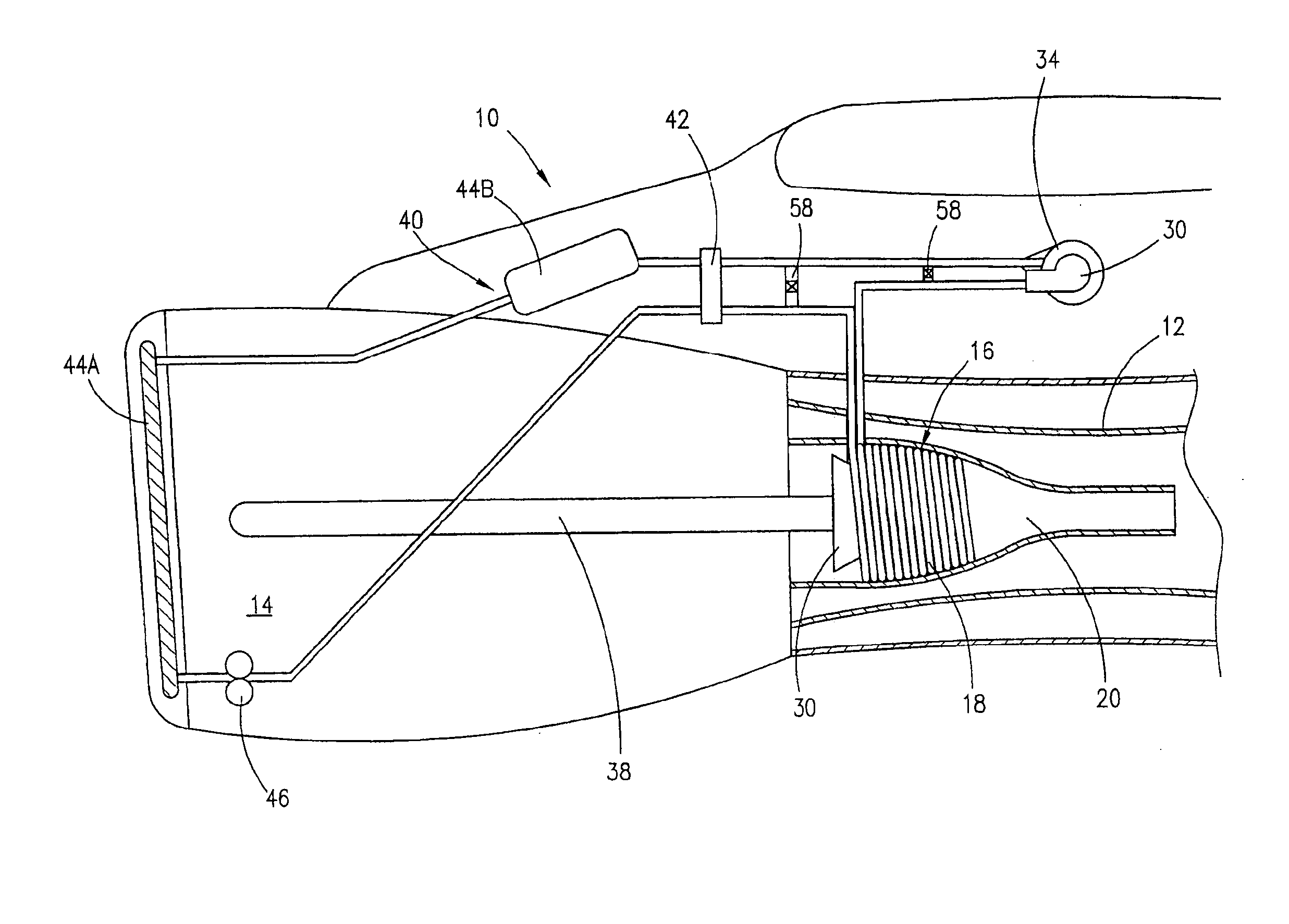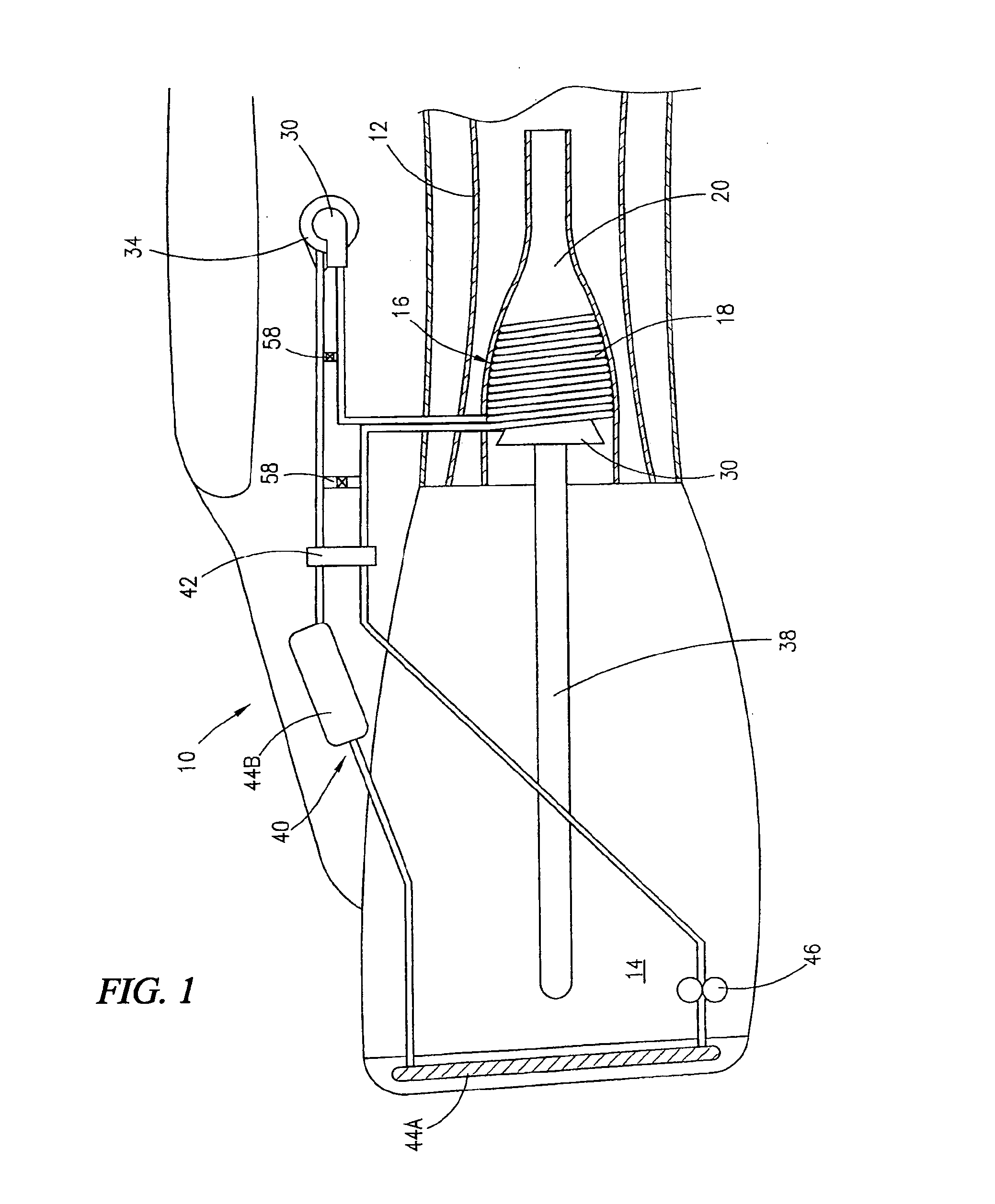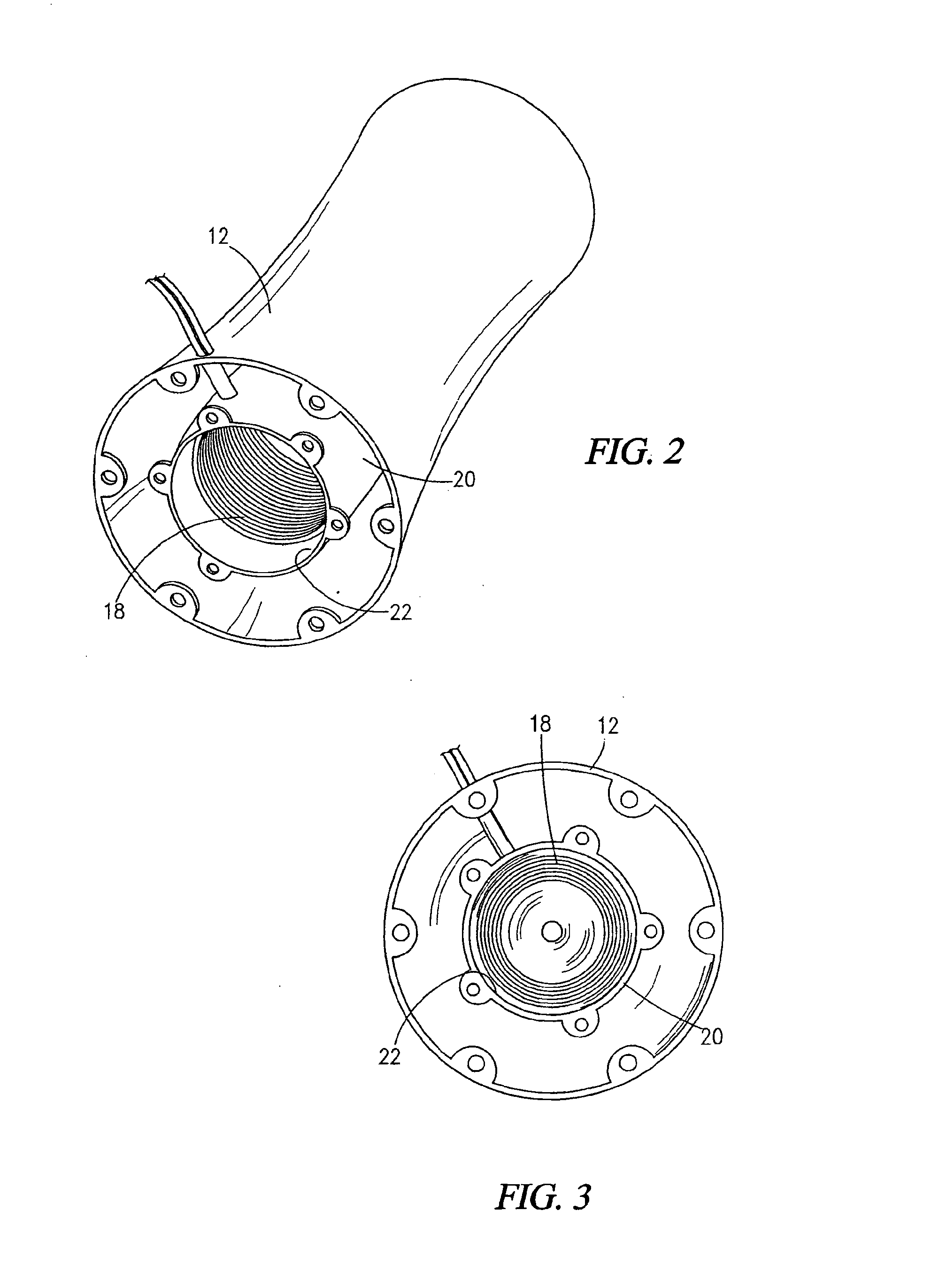Heat Recovery System for a Gas Turbine Engine
a gas turbine engine and heat recovery technology, applied in the direction of machines/engines, efficient propulsion technologies, energy-efficient board measures, etc., can solve the problems of engine performance reduction, engine use more fuel, engine work harder to achieve the thrust output selected, etc., to achieve the effect of reducing fuel consumption
- Summary
- Abstract
- Description
- Claims
- Application Information
AI Technical Summary
Benefits of technology
Problems solved by technology
Method used
Image
Examples
Embodiment Construction
[0021]A heat recovery system 10 utilizing exhaust nozzle 12 of engine 14 is disclosed. Heat recovery system 10 is designed to utilize otherwise wasted energy from exhaust gas which is expelled through exhaust nozzle 12. Heat recovery system 10 can be installed in gas turbine engines for use in aircraft, marine vessels, and any other device having a gas turbine engine.
[0022]Engine 14 is equipped with heat recovery system 10 which has a heat exchanger. Heat exchanger 16 can be a substantially hollow coil 18, preferably positioned within centerbody 20. Additionally, coil 18 may adjoin inner surface 22 of the centerbody 20. Coil 18 may have a circular cross section, a substantially rectangular cross section or any other shape which facilitates movement of a fluid 24.
[0023]Alternatively, heat exchanger 16 can be a plurality of jackets 52 positioned between inner skin 48 and outer skin 50 of exhaust nozzle 12. Specifically, jackets 52 can be substantially circumferentially disposed within...
PUM
 Login to View More
Login to View More Abstract
Description
Claims
Application Information
 Login to View More
Login to View More - R&D
- Intellectual Property
- Life Sciences
- Materials
- Tech Scout
- Unparalleled Data Quality
- Higher Quality Content
- 60% Fewer Hallucinations
Browse by: Latest US Patents, China's latest patents, Technical Efficacy Thesaurus, Application Domain, Technology Topic, Popular Technical Reports.
© 2025 PatSnap. All rights reserved.Legal|Privacy policy|Modern Slavery Act Transparency Statement|Sitemap|About US| Contact US: help@patsnap.com



